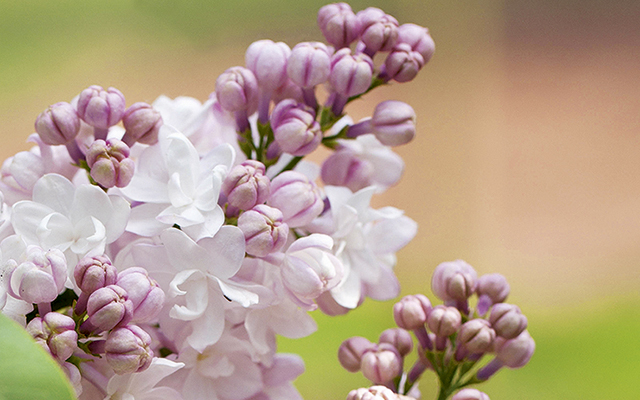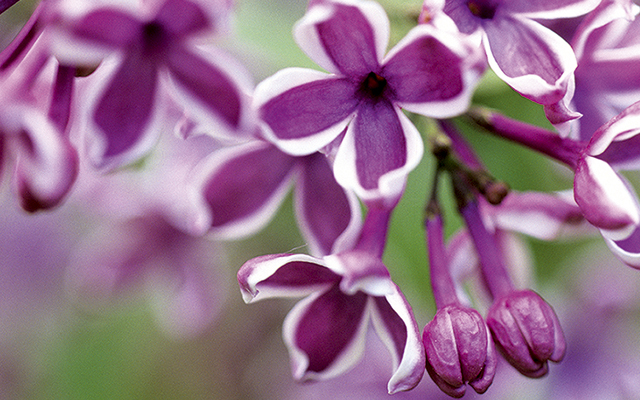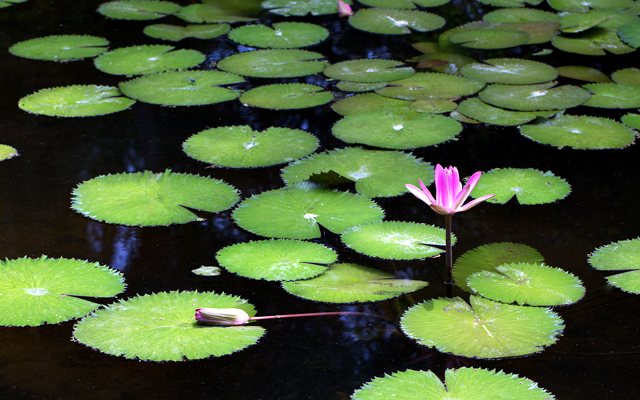Why we gather lilacs for the spring
Charles Quest-Ritson needs no excuse to plant as many lilacs as possible.


We have inherited no lilacs in our new garden above the River Itchen, which is strange because they’re among the best-performing shrubs on chalk soil and we often see them in abandoned gardens attached to long-deserted farm cottages.
Planting lilacs fulfils one of the paramount rules of gardening, which is to grow things that will do well for you. And they’re so thrifty and uncomplaining that I need no excuse to plant as many as I can squeeze in: dark purple Charles Joly, blue-ish Firmament, double-flowered Katherine Havemeyer, palest pink Krasavitsa Moskvy, Madame Lemoine (the brilliant white double one that you see everywhere), creamy-yellow Primrose and Sensation, whose flowers are mauve with white margins. All are presently lined up in pots for planting out.
I also have a variegated form of Katherine Havemeyer, which started life as a sport on a lilac growing in the Queen Mother’s garden at Birkhall — how could one resist such a pedigree? My other pedigree lilac, Syringa meyeri Palibin, came from Gertrude Jekyll’s garden at Munstead Wood and makes a shrub no more than 28in high. It’s a clumper, so I dug up a plant from our last garden and split it into 12 pieces, which will provide repetition along the front of a border and bind it together.
You will notice that I call lilacs shrubs, not trees. That’s how I saw them grown in the Descanso Gardens in the hills above Los Angeles. Descanso has a collection of more than 250 lilac cultivars — a fascinating study for the plantsman—which are pruned to maximise their flowering. This means cutting out old wood and keeping them to a height of no more than 7ft. Treat them like shrub roses and they will thrive.

Lilacs are also very hardy. I learned this when I went on a botanical crawl around gardens in Central and Eastern Europe. Vienna, Prague, Warsaw and Vilnius — the range of hardy ornamental shrubs got ever smaller until I arrived at the Moscow Botanical Garden, where only lilacs were real stars, and properly appreciated, too. It’s in cold climates that lilacs have been developed and improved in recent years. I fancy planting Krasavitsa Moskvy, with Clematis Warszawska Nike for Pan-Slav harmony.
I prefer to grow lilacs on their own roots because they sucker gently and it’s nice to be able to give pieces to people. Some of my new lilacs have been grafted, so I will plant them deeply, in the hope that the scions will make their own roots and the original stock will die away. Truth to tell, there is no excuse for grafting lilacs nowadays — they grow well from softwood cuttings in April and will reach a good size if kept under cover until the first autumn.
But there is so much more to this time of year than lilacs. May is the best month in any garden, when so much comes sweetly into flower and the soft greens of new leaves are so beguiling — but it is also the moment when weeds run amok. If you’re not on top of them by the end of April, you will lose control of the garden for the rest of the year.
Exquisite houses, the beauty of Nature, and how to get the most from your life, straight to your inbox.
One good thing about making a new garden on a fairly empty canvas, however, is that there are no borders to weed, lawns to edge or hedges to trim. I can spend all this month and next visiting other people’s gardens and getting ideas for my own. The education of a gardener never ends.

How to build a wildlife pond
Alan Titchmarsh makes a lake.
How to grow fritillaries
Botanical artist and Fritillaria specialist Laurence Hill reveals his top tips.
Country Life is unlike any other magazine: the only glossy weekly on the newsstand and the only magazine that has been guest-edited by His Majesty The King not once, but twice. It is a celebration of modern rural life and all its diverse joys and pleasures — that was first published in Queen Victoria's Diamond Jubilee year. Our eclectic mixture of witty and informative content — from the most up-to-date property news and commentary and a coveted glimpse inside some of the UK's best houses and gardens, to gardening, the arts and interior design, written by experts in their field — still cannot be found in print or online, anywhere else.
